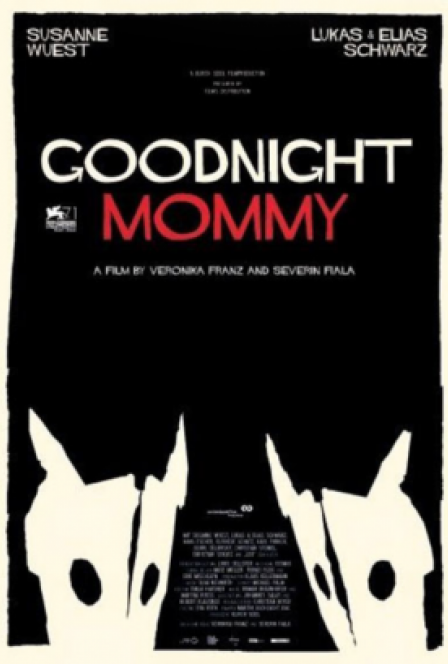Although more a work of body horror than a traditional ghost story, specters loom everywhere in Severin Fiala and Veronika Franz’s Goodnight, Mommy. The film opens with an archival clip of a stereotypically traditional Austrian family, an image that haunts the literally broken and injured family at the center of the film. As a prologue, it reads like a reclaimed piece of propaganda depicting the ideal Germanic family, with its focus on the benevolent mother as leader. Yet it is precisely these implied qualities that allude to the real phantom which lurks at the edges of the narrative: the lingering spirit of Nazism. If Michael Haneke’s The White Ribbon examines the children who would grow up to become Nazis, then Fiala and Franz’s film provides an almost symmetrical look at the other side of that conceit, the children (or, maybe more realistically, the grandchildren) of Nazis who are raised by a culture that forcefully pushes the past aside and out of the conversation. If Faulkner’s South was eternally trapped under the burdens of slavery and the Civil War, this vision of Austria — like Haneke’s, and also like Fassbinder’s Germany — cannot escape the plague of a Nazi past that marked the country’s history.
The overtures to this theme are subtle but present in this disturbing take on a fairy tale structure. When the unnamed mother (Susanne Wuest) of twin brothers Lukas and Elias (Lukas and Elias Scwharz) returns, she presents herself as a faceless autocrat; covered in bandages that make her unrecognizable, she purposely ignores one of the boys and arbitrarily assigns rules so that she may “recover” from her operation. Doubtful that she really is their mother, the boys ignore her dicta to stay only in the garden and to not bring any animals home. When they hear a cat meowing in a cemetery crypt, they enter the tomb; inside, the filmmakers depict a mound composed of different skeletons, which again directs the viewer to the unmentioned crimes of history. The mother enters their room to look for the forbidden animal, but she instead she finds a lighter. When asked why he has this in bed, Elias replies sarcastically that he might burn some books, another historical allusion that challenges their mother to acknowledge the tragic past. The cat itself then becomes the central metaphor for unspoken horrors, as the boys suspect their mother’s work in the animal’s mysterious death. Rather than dispose of their briefly beloved pet, the boys embalm it in a tank, making it the centerpiece of their home and eventually the film’s shocking final sequence.
For the most part, the filmmakers do their best not to use this referential quality too aggressively or blatantly. Instead, they draw from the well of surreal horror films in an attempt to evoke a sense of childlike dread. Nightmare sequences play an important role, with the mother figure stripping bare in the woods to reveal a blurred, demonically shaking visage. In another, the boys slice open their mother’s abdomen to find a horde of their “pet” insects inside her body. At the same time, these dream sequences blur the “reality” of the film intentionally. Just as the mother has tried to cover up their family’s history, removing photographs of her wedding from the family album, hiding the fact that she herself had a twin sister (or did she? This remains one of the enigmas at the end of the film.), and even surgically removing her facial birthmark, the filmmakers seem to want to convey how this scrubbing of the past can affect the reality of the narrative. As the scenes become more and more stylized, it’s never entirely clear what is happening and what exists in a kind of fantasy realm. In the end, the film operates as a cautionary warning to those who want to scrub the past: the demons of history, both personal and national, never quite abandon us.

